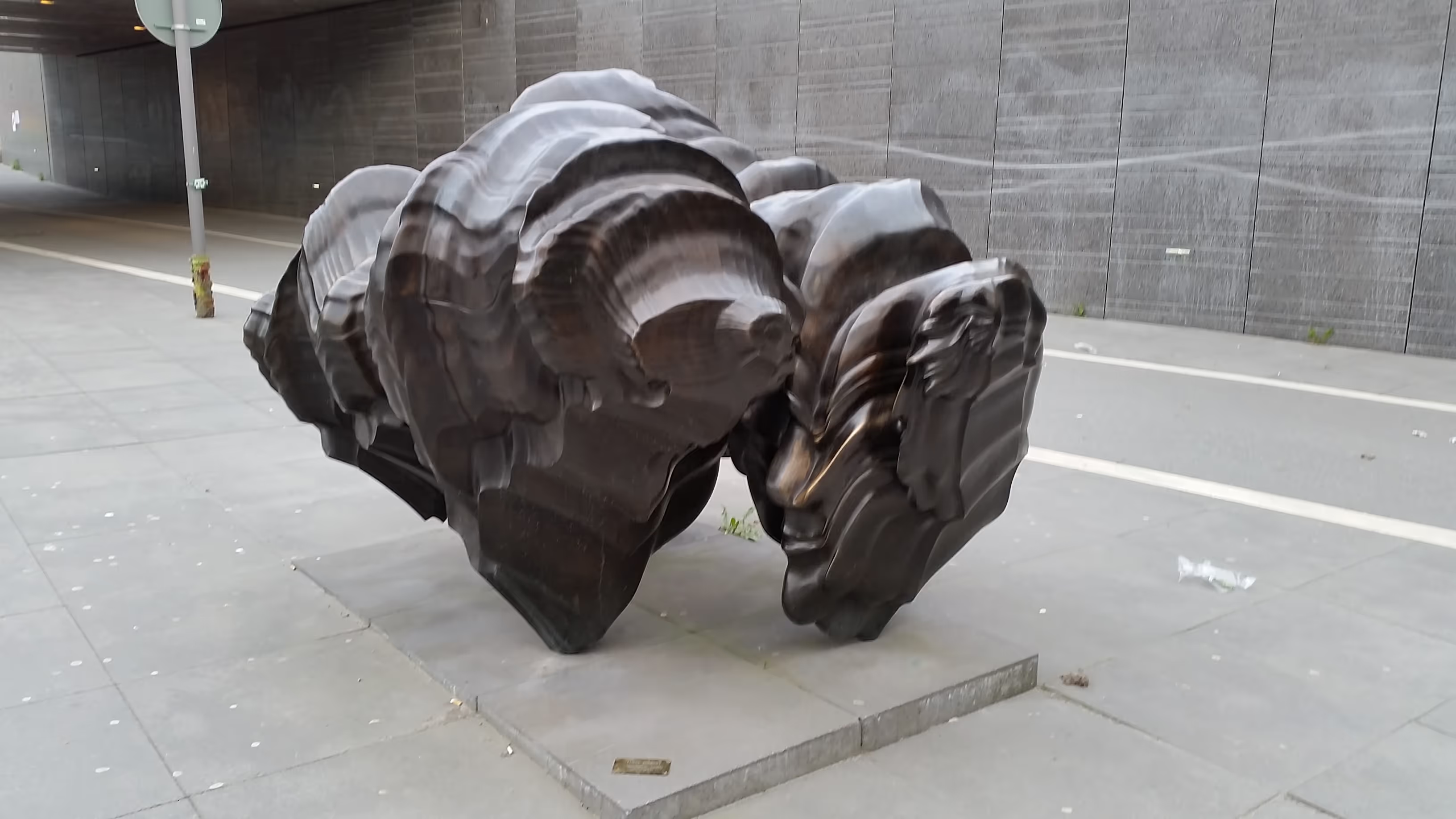Tony Cragg: The magic of forms from found objects

They are curvy, bolted, and are sometimes reminiscent of human figures or fossils: Tony Cragg creates sculptures to explore and experience the infinity of forms in the world. Because the internationally renowned graphic artist, sculptor and draftsman believes art is important in order to creatively enrich our environment. Learn more about the British-German artist, his life and his most famous works.
Tony Cragg's career
Tony Cragg was born in Liverpool in 1949 and, after graduating from high school, worked as a laboratory assistant at a rubber industry research association before dedicating himself to his love of art. He studied at Gloucestershire College of Art and Design and completed his master's degree at the Wimbledon School of Art and the Royal College of Art in London. In 1976 he received a teaching assignment at the École des Beaux-Arts in Metz and decided in 1977 to move and relocate his home and studio to Wuppertal. 1978—1988 he received a teaching position at the Düsseldorf Art Academy, which led to a professorship from 1988.
From 2009 to 2013, he led the art academy as rector. However, he gave up this post to found a sculpture park for his works and those of other sculptors. Since opening in 2008, the Waldfrieden sculpture park in Wuppertal developed into one of the most popular art destinations in Germany.
Cragg takes part in numerous international exhibitions, such as the Kassel documenta (1982, 1987) and the Venice Biennale (1986, 1993). Among other things, he won the Turner Prize in 1988, received the Federal Cross of Merit in 2012 and was knighted by Queen Elizabeth II in 2018. The artist currently lives and works in his adopted home of Wuppertal.
Works of art made from found objects
“When you walk through the streets, you only ever see the same thing. Cars, advertising signs, lamps, buses, houses, everything is a terrible world of utility that is poor in form,” Cragg said recently in a interview. There is an “impoverishment of form on this planet.” This development tried Tony Cragg Since the beginning of his career, he has been doing something about it with sculptures in public space.
While studying art, he created floor and wall sculptures from simple, found things. In the 1980s, he made assemblages from colored plastic waste and used materials such as stone, wood, glass and metals for other works in addition to found objects. He then often transformed these into abstract and figurative sculptures that resemble humans, animals or fossils. His love for these forms began as a child.
Back then, he collected minerals such as calcite, fossil snails, mussels and sea urchins. “A habit, “as Cragg says. He is fascinated by the fact that, as fossils, they are part of a past epoch of geological history, but for the sculptor they have timeless aesthetics and unwavering fascination. The original-looking forms of Cragg almost seem to grow into space, are often meters high, organic and look as if they were beginning to spin and squirm.
His work is often described as “radical materialism,” as he is interested in the internal structures of materials and how they can be used to create new forms. He sees sculpture as a study of how materials and material forms influence and shape our ideas and feelings. This is reflected in the way that Cragg two extensive groups of works, which he “Early Forms” and “Rational Beings” named, edited and revised.
The “Early Forms” explore the possibilities of transforming familiar objects, such as containers, into new and unusual forms. “Rational Beings” explores the relationship between two seemingly different aesthetic descriptions of the world: the rational, mathematically based formal constructions that make up the most complicated organic forms to which we react emotionally.
By the way, Tony Cragg does not have a “favorite material” for his sculptures. Wood, metal, glass, plaster, marble — they all have meaning for us, he explains; each has its own tonality, is a bit like an instrument in an orchestra.
Sculptures for six-digit amounts
Collectors or investors who want to buy a real Cragg sometimes have to dig deep into their pockets. With a bit of luck, drawings can be found for as little as a thousand dollars, but the artist's sculptures usually cost five to six figures and often exceed the estimated price at auctions. For example, the sculpture “Elliptical Column” was
chez Phillips in New York Auctioned off for 586,000 dollars — the estimated price was 350,000 to 450,000 dollars. To make fine art affordable for everyone, FINEXITY has set itself the goal of democratizing art as an asset class. In the form of digital shares, investors will soon be able to add “a piece” of a genuine, curated Cragg masterpiece to their portfolio and in this way participate in potential increases in value and sales revenue just like an owner.



